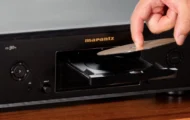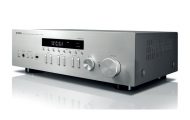Article – From the horse’s mouth
SiliconDust (HDHomeRun)
HDHomeRun DUAL | Welcome to SiliconDust (Product Page)
My Comments
After SiliconDust have enabled the HDHomeRun Prime 3-tuner and 6-tuner cable-TV broadcast-LAN tuners with DLNA digital-media-server functionality for both standard and premium content, they have taken steps to bring this concept out to more of their range broadcast-LAN boxes.
Here, they are in the throes of issuing the HDHomeRun Dual broadcast-LAN box which has two tuners and is capable of picking over-the-air and unencrypted basic cable TV content and serving it over a home network. This is not just to their software or software that runs particular programming interfaces but to network video equipment that supports DLNA like the PS3 or an increasing number of Blu-Ray players and Smart TVs.
At the moment, as the retransmission fights take place between TV networks and cable companies about how much the cable operators pay the TV networks to package their content, we are starting to see the need for a regular TV antenna in most US homes to pick up the full complement of local TV content. This is even though it would have been available via the cable TV services. Similarly, the trend towards cord-cutting has brought American households back to traditional over-the-air TV alongside Netfilx and Hulu.
This device is intending to either complement the HDHomeRun Prime to bring in the over-the-air content (including local channels lost to cable in-fighting) to the computers, smartphones, tablets and DLNA devices using the home network. Similarly, it would be an economy solution that could please the most persistent cord-cutter who occasionally dabbles in over-the-air for news and sport.
But what I see of this device is that it could be the start of action to port the DLNA capability to DVB-based HDHomeRun broadcast-LAN boxes that will end up in most of the rest of the world.
There will also have to be a time where SiliconDust and others who make DLNA-capable broadcast-LAN devices will need to factor in installations where multiple devices of this type are serving the same network at any time in the network’s life. This may be to increase concurrent viewing/recording capacity or to add coverage for particular broadcast bands and modes to an existing setup. Here, it may require the ability to have one logical tuner device representing multiple physical devices when it comes to broadcast-LAN content sources.


